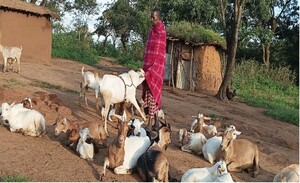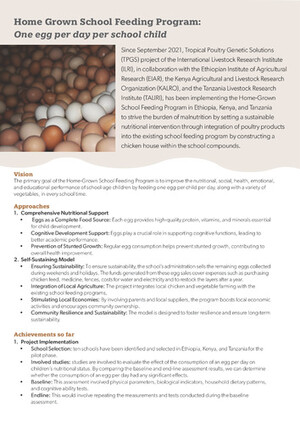
Comparison of different poultry breeds under station and on-farm conditions in Ethiopia
Abstract
A selective breeding program was implemented to improve the performance of indigenous chickens. Improved chicken from the 7th generation were compared with commercial layer, crossbred and unselected indigenous chickens both on-station and on-farm. A total of 870 chickens were used. More than 600 chickens (n=150 and n=120 from each breed during growing and laying period respectively) arranged in completely randomized design were followed on-station, and 270 (90 from commercial, crossbred and improved during laying period) were evaluated on-farm in Ada (n=6 farms) and Horro (n=9 farms) districts in a split-plot design. Body weight, cumulative feed intake, and survival were recorded while feed conversion ratio was calculated at week 8, 12, 16 and 20 during the growing period on-station. Age at first egg and total egg number during lifetime were recorded once. Survival and hen housed egg production were recorded at month 3, 6, 9 and 12 of age both on-station and on-farm. Egg weight, and feed per egg were recorded and used to calculate feed conversion ratio during the laying period on-station. Significant effect of breed (P<0.001) and interaction with time (P<0.001) was observed for traits measured on-station during the growing and laying period. Similarly significant effect of breed, village and breed-village interactions were observed on-farm (P<0.001). Improved indigenous chickens had higher performance than indigenous chickens for all traits measured on station (P<0.05). 10 farmers out of 16 in the Ada district and 7 out of 16 in the Horro district dropped out after month 3 at different times either due to high chicken mortality or reduced motivation of the farmer. Improved chickens have been genetically improved as compared to unimproved, but their performance is still low compared to commercial chickens.
Citation
Wondmeneh, E., Waaij, E.H Van der, Udo, H.M.J., Dessie, T. and Arendonk, J.A.M Van. 2016. Comparison of different poultry breeds under station and on-farm conditions in Ethiopia. Livestock Science 183:72–77.










